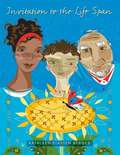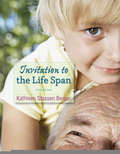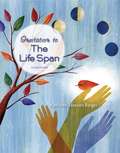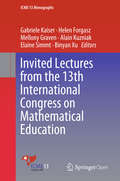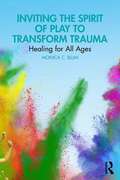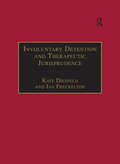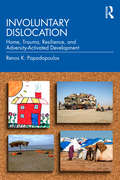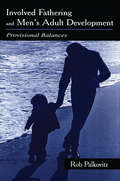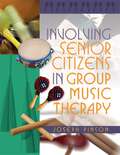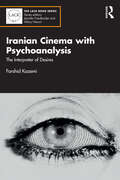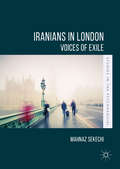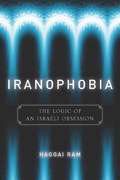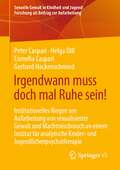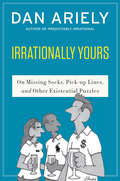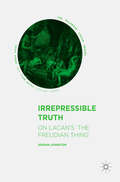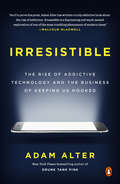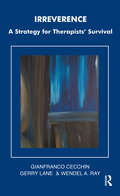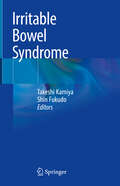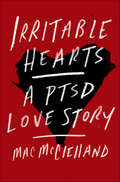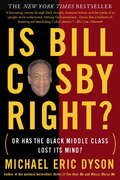- Table View
- List View
Invitation to the Life Span
by Kathleen BergerThe world’s foremost author of human development textbooks the research, theories, and stories behind our understanding of the entire length of the life span in just 15 brief chapters.
Invitation to the Life Span
by Kathleen Stassen BergerThis brief, original, 15-chapter textbook was created from page 1 to address the challenges teachers and students face when covering the entire life span in a semester (or even a quarter!). The hallmark Berger qualities are all here--the relatable presentation of research, the inclusive approach to world cultures, the study help that builds critical thinking and observational skills, the outstanding media and supplements--and all held together with Berger's skill in bringing students and the science together.
Invitation to the Life Span
by Kathleen Stassen BergerEdition after edition, Kathleen Stassen Berger's bestselling textbooks connect all kinds of students to current state of developmental psychology, in an engaging, accessible, culturally inclusive way. Berger'sInvitation to the Life Span does this in just 15 concise chapters, in a presentation that meets the challenges of exploring the breadth of the life span in a single term. The new edition of Invitation to the Life Span incorporates a wide range of new research, especially in fast-moving areas such as brain development and psychopathology, while taking advantage of innovative new tools for media-centered teaching and learning, including seamless integration with the book's dedicated version of Worth's online course space, LaunchPad. But throughout, as always, the signature voice of Kathleen Berger ties it all together, with relatable explanations of scientific content, wide ranging cultural examples, and skill-building tools for sharper observation and critical thinking.
Invitation to the Life Span (Second Edition)
by Kathleen Stassen BergerEvery year, scientists discover and explain new concepts and present new research. The best of these are integrated into the text, including hundreds of new references on many topics--among them the genetics of delinquency, infant nutrition, bipolar and autistic spectrum disorders, high-stakes testing, drug use and drug addiction, the importance of attachment and brain development throughout childhood and into the last years of our lives. Cognizant of the interdisciplinary nature of human development, I reflect research in biology, sociology, education, anthropology, political science, and more--as well as in my home discipline, psychology.
Invited Lectures from the 13th International Congress on Mathematical Education
by Gabriele Kaiser Alain Kuzniak Mellony Graven Helen Forgasz Elaine Simmt Binyan XuThe book presents the Invited Lectures given at 13th International Congress on Mathematical Education (ICME-13). ICME-13 took place from 24th- 31st July 2016 at the University of Hamburg in Hamburg (Germany). The congress was hosted by the Society of Didactics of Mathematics (Gesellschaft für Didaktik der Mathematik - GDM) and took place under the auspices of the International Commission on Mathematical Instruction (ICMI). ICME-13 – the biggest ICME so far - brought together about 3500 mathematics educators from 105 countries, additionally 250 teachers from German speaking countries met for specific activities. The scholars came together to share their work on the improvement of mathematics education at all educational levels.. The papers present the work of prominent mathematics educators from all over the globe and give insight into the current discussion in mathematics education. The Invited Lectures cover a wide spectrum of topics, themes and issues and aim to give direction to future research towards educational improvement in the teaching and learning of mathematics education. This book is of particular interest to researchers, teachers and curriculum developers in mathematics education.
Inviting the Spirit of Play to Transform Trauma: Healing for All Ages
by Monica C. BlumThis unique and accessible book unites leading-edge trauma approaches with the power of playful practice to treat traumatized clients of all ages.Abundant case examples and exercises show new and established therapists how to relationally engage a playful mindset—not play therapy—to accelerate trauma healing and transformation. The book grows up the wisdom embedded in child-based playfulness and grows down complex, adult-focused trauma theory. Readers will discover how to playfully integrate scientifically supported healing principles of Polyvagal Theory, Interpersonal Neurobiology, Coherence Therapy, Accelerated Experiential Dynamic Psychotherapy, Sensorimotor Psychotherapy, and Internal Family Systems, along with broaden-and-build theory, affective neuroscience, structural dissociation, mindfulness, spirituality and more.Most importantly, this book will empower therapists working at the heart of trauma treatment to compassionately hold space for the depth of trauma’s painful, isolating effects while embodying play’s life-affirming, joyful, and transformational qualities to make trauma healing more fun, creative, engaging, and effective.
Involuntary Detention and Therapeutic Jurisprudence: International Perspectives on Civil Commitment
by Kate DiesfeldInternational developments within the last twenty years have demonstrated controversial shifts in treatment for people with mental illnesses and the care of persons with intellectual disabilities. These shifts have been apparent in an emphasis on deinstitutionalization, increased scrutiny of detention and discharge decisions and, in some countries, in enforced treatment and care in the community. As we become increasingly conscious of the political and moral dimensions of civil commitment, these concerns are reflected in the professional literature, but this does not often enough focus on issues of clinical and legal principle, nor is it in a form which encourages comparative analysis. This collection draws on contributors from the UK, the USA, Australia, the Netherlands, Canada and New Zealand, who share a commitment to evaluating whether the civil detention processes protect the liberty, dignity and justice interests of those with mental illnesses and intellectual disabilities. The book is written from a therapeutic jurisprudence perspective and poses a number of questions with international application, such as: Are more categories of people being detained? Is involuntary detention serving new purposes? Are different forms of detention gaining credence and being more widely utilized? And, are admission decisions and review of detention decisions transparent, consistent, and just?
Involuntary Dislocation: Home, Trauma, Resilience, and Adversity-Activated Development
by Renos K. PapadopoulosRenos K. Papadopoulos clearly and sensitively explores the experiences of people who reluctantly abandon their homes, searching for safer lives elsewhere, and provides a detailed guide to the complex experiences of involuntary dislocation. Involuntary Dislocation: Home, Trauma, Resilience, and Adversity-Activated Development identifies involuntary dislocation as a distinct phenomenon, challenging existing assumptions and established positions, and explores its linguistic, historical, and cultural contexts. Papadopoulos elaborates on key themes including home, identity, nostalgic disorientation, the victim, and trauma, providing an in-depth understanding of each contributing factor whilst emphasising the human experience throughout. The book concludes by articulating an approach to conceptualising and working with people who have experienced adversities engendered by involuntary dislocation, and with a reflection on the language of repair and renewal. Involuntary Dislocation will be a compassionate and comprehensive guide for psychotherapists, clinical psychologists, counsellors, and other professionals working with people who have experienced displacement. It will also be important reading for anyone wishing to understand the psychosocial impact of extreme adversity.
Involved Fathering and Men's Adult Development: Provisional Balances
by Rob PalkovitzInvolved Fathering and Men's Adult Development is an interdisciplinary book that synthesizes theoretical, empirical, and anecdotal writings from different fields and provides an analysis of extensive interviews with 40 fathers. Along with the exploration of the distinct contribution that fathers make to their children's development, the author pursues the parallel theme of the effect this involvement has on the fathers' own development in adulthood. This book will provide its readers with a realistic and useful beginning point to bring a synthesis of developmental theories, family studies perspectives, and men's insights about fathering that will enhance our academic understanding of fathering and adult development. This book can also spark reflective and practical application for fathers and families, whether readers are academicians, practitioners, policymakers, or fathers in the trenches.
Involving Senior Citizens in Group Music Therapy
by Joseph PinsonThis practical guide to running music therapy groups with senior citizens provides effective strategies that encourage therapists to be creative and engaging, and involve participants fully in the music-making process. Ideal for those working with older people in assisted living or nursing care homes, the book covers initial assessment, setting measurable goals, and evaluating progress; discusses current music therapy techniques; and offers an improved plan of intervention. The author explains how to choose or create music that is accessible to this age group, designing strategies that utilize cognitive, motor, social-emotional, and music skills to the fullest. The book provides useful original music and shows readers how to compose their own songs that relate to the experiences of the group they are working with, emphasizing shared common interests and enjoyment in the moment.
Involving Senior Citizens in Group Music Therapy
by Joseph PinsonThis practical guide to running music therapy groups with senior citizens provides effective strategies that encourage therapists to be creative and engaging, and involve participants fully in the music-making process.Ideal for those working with older people in assisted living or nursing care homes, the book covers initial assessment, setting measurable goals, and evaluating progress; discusses current music therapy techniques; and offers an improved plan of intervention. The author explains how to choose or create music that is accessible to this age group, designing strategies that utilize cognitive, motor, social-emotional, and music skills to the fullest. The book provides useful original music and shows readers how to compose their own songs that relate to the experiences of the group they are working with, emphasizing shared common interests and enjoyment in the moment.
Iranian Cinema with Psychoanalysis: The Interpreter of Desires (The LACK Book Series)
by Farshid KazemiCombining Lacanian psychoanalytic theory, Iranian Shi'ite thought, and Islamicate sexualities, Iranian Cinema with Psychoanalysis: The Interpreter of Desires provides a groundbreaking analysis of the logic of desire and sexuality in key films of contemporary Iranian cinema, arguing that there is a profound, albeit surprising, correlation between post-revolutionary Iranian cinema and psychoanalysis that has remained unthought.Looking through the prism of psychoanalysis, Farshid Kazemi argues that censorship on the representation and expression of sexual desire in Iranian films has, contrary to the desired effect, produced a cinema of desire. This book is the first to provide an analysis of the unconscious structure of desire and sexuality operative in post-revolutionary Iranian cinema, demonstrating that psychoanalytic literature is uniquely positioned to shed light on this aspect of film. Kazemi uncovers the hidden libidinal economy of Iranian cinema by exposing the fact that despite the State censor’s desire to suppress desire, it has inadvertently inscribed desire in its formal structure. The book offers a compelling and innovative examination of Iranian cinema through a psychoanalytic lens, contributing significantly to the field of film studies.Iranian Cinema with Psychoanalysis will be of great interest to academics and scholars of film studies, psychoanalytic studies, Lacanian theory, film theory, Iranian cinema, global cinema, Iranian studies, and Middle Eastern studies.
Iranians in London: Voices of Exile (Studies in the Psychosocial)
by Mahnaz SekechiThis book explores the psychosocial significance of loss and exclusion in the lives of many Iranian immigrants living in London since the Iranian revolution of 1979. It addresses the experiences of middle-class Iranians who left Iran in both ‘voluntary’ contexts (immigration) and in ‘enforced’ contexts (exile). The author elucidates the experiences of ‘ordinary’ middle-class Iranians who chose to leave Iran given the socio-politico-cultural context of the changes wrought by the Islamic Republic in Iranian society. Mahnaz Sekechi argues that losses of country, liberty and security in Iran combined with varying degrees of social exclusion and downward mobility in London have led to an encapsulated sadness for many, despite their capacity for creative living. The book also demonstrates the value of psychosocial analysis in understanding dislocations in general and their effects on wellbeing.
Iranophobia
by Haggai RamIsrael and Iran invariably are portrayed as sworn enemies, engaged in an unending conflict with potentially apocalyptic implications. Iranophobiaoffers an innovative and provocative new reading of this conflict. Concerned foremost with how Israelis perceive Iran, the author steps back from all-too-common geopolitical analyses to show that this conflict is as much a product of shared cultural trajectories and entangled histories as it is one of strategic concerns and political differences. Haggai Ram, an Israeli scholar, explores prevalent Israeli assumptions about Iran to look at how these assumptions have, in turn, reflected and shaped Jewish Israeli identity. Drawing on diverse political, cultural, and academic sources, he concludes that anti-Iran phobias in the Israeli public sphere are largely projections of perceived domestic threats to the prevailing Israeli ethnocratic order. At the same time, he examines these phobias in relation to the Jewish state's use of violence in the Palestinian territories and Lebanon in the post-9/11 world. In the end, Ram demonstrates that the conflict between Israel and Iran may not be as essential and polarized as common knowledge assumes. Israeli anti-Iran phobias are derived equally from domestic anxieties about the Jewish state's ethnic and religious identities and from exaggerated and displaced strategic concerns in the era of the "war on terrorism. "
Irgendwann muss doch mal Ruhe sein!: Institutionelles Ringen um Aufarbeitung von sexualisierter Gewalt und Machtmissbrauch an einem Institut für analytische Kinder- und Jugendlichenpsychotherapie (Sexuelle Gewalt in Kindheit und Jugend: Forschung als Beitrag zur Aufarbeitung)
by Gerhard Hackenschmied Peter Caspari Helga Dill Cornelia CaspariDas Buch liefert – erstmals im deutschsprachigen Raum – einen umfassenden wissenschaftlichen Beitrag zur Aufarbeitung sexualisierter Gewalt in einem Psychotherapieinstitut. Die qualitative Fallstudie nimmt jahrzehntelangen Machtmissbrauch und sexualisierte Gewalt durch den Leiter eines analytischen Kinder- und Jugendinstituts in den Blick. Dabei zeigt sich, dass die in diesem System verstrickten Psychotherapeut*innen zentralen Vorstellungen und Konzepten ihrer Profession nicht gerecht werden: Schweigen, Verleugnung, Rationalisierung, Abwehr von Verantwortung und Ignoranz gegenüber Betroffenen verhindern über lange Zeit die Aufdeckung der Taten und nachhaltige Formen der Aufarbeitung. Das Institutsleben wird von einer dialektischen Spannung zwischen der Notwendigkeit der Bearbeitung und dem Wunsch nach ungestörtem Funktionieren geprägt. Diese Dynamik erweist sich zugleich als Analogie zu Problembewältigungsmustern psychotherapeutischer Patient*innen. Der Fall verweist auf grundsätzliche Probleme im Bereich der Psychotherapie, die vor allem mit einem strukturellen Machtungleichgewicht und ausgeprägten Abhängigkeitsverhältnissen sowohl im Kontext der Ausbildung als auch im Behandlungssetting zu tun haben. Aus den Erkenntnissen dieser empirischen Untersuchung werden professions- und organisationsethische Überlegungen abgeleitet und – darauf basierend – konkrete Empfehlungen zur Prävention von sexualisierter Gewalt in Psychotherapieinstituten formuliert.
Irrationally Yours: On Missing Socks, Pickup Lines, and Other Existential Puzzles
by Dr Dan Ariely William HaefeliNew York Times bestselling author Dan Ariely teams up with legendary New Yorker cartoonist William Haefeli to present an expanded, illustrated anthology of his immensely popular Wall Street Journal advice column, "Ask Ariely."Social scientist Dan Ariely revolutionized the way we think about ourselves, our minds, and our actions in his books Predictably Irrational, The Upside of Irrationality, and The (Honest) Truth About Dishonesty. Ariely applies this scientific analysis of the human condition in his "Ask Ariely" Q&A column in the Wall Street Journal, in which he responds to readers who write in with personal conundrums, ranging from the serious to the curious. What can you do to stay calm when you're playing the volatile stock market? What's the best way to get someone to stop smoking? How can you maximize the return on your investment at an all-you-can-eat buffet? Is it possible to put a price on the human soul? Can you ever rationally justify spending thousands of dollars on a Rolex?With their trademark insight and wit, Ariely and Haefeli help us reflect on how we can reason our way through external and internal challenges. Readers will laugh, learn, and, most important, gain a new perspective on how to deal with the inevitable problems that plague daily life.
Irrepressible Truth
by Adrian JohnstonThis book offers readers a uniquely detailed engagement with the ideas of legendary French psychoanalyst Jacques Lacan. The Freudian Thing is one of Lacan's most important texts, wherein he explains the significance and stakes of his "return to Freud" as a passionate defence of Freud's disturbing, epoch-making discovery of the unconscious, against misrepresentations and criticisms of it. However, Lacan is characteristically cryptic in The Freudian Thing. The combination of his writing style and vast range of references renders much of his thinking inaccessible to all but a narrow circle of scholarly specialists. Johnston's Irrepressible Truth opens up the universe of Lacanian psychoanalysis to much wider audiences by furnishing a sentence-by-sentence interpretive unpacking of this pivotal 1955 essay. In so doing, Johnston reveals the precision, rigor, and soundness of Lacan's teachings.
Irresistible: The Rise Of Addictive Technology And The Business Of Keeping Us Hooked
by Adam AlterWelcome to the age of behavioral addiction—an age in which half of the American population is addicted to at least one behavior. We obsess over our emails, Instagram likes, and Facebook feeds; we binge on TV episodes and YouTube videos; we work longer hours each year; and we spend an average of three hours each day using our smartphones. Half of us would rather suffer a broken bone than a broken phone, and Millennial kids spend so much time in front of screens that they struggle to interact with real, live humans. In this revolutionary book, Adam Alter, a professor of psychology and marketing at NYU, tracks the rise of behavioral addiction, and explains why so many of today's products are irresistible. Though these miraculous products melt the miles that separate people across the globe, their extraordinary and sometimes damaging magnetism is no accident. The companies that design these products tweak them over time until they become almost impossible to resist. By reverse engineering behavioral addiction, Alter explains how we can harness addictive products for the good—to improve how we communicate with each other, spend and save our money, and set boundaries between work and play—and how we can mitigate their most damaging effects on our well-being, and the health and happiness of our children.Adam Alter's previous book, Drunk Tank Pink: And Other Unexpected Forces that Shape How We Think, Feel, and Behave is available in paperback from Penguin.
Irreverence: A Strategy for Therapists' Survival (The Systemic Thinking and Practice Series)
by Bradford P. Keeney David Campbell Ros Draper Gianfranco Cecchin Gerry Lane Wendel A. RayIrreverence: A Strategy for Therapists' Survival marks the end result of a collaboration between three creative and highly respected therapists and writers in the family therapy field. It continues the tradition of the Milan group and later systemic thinkers by examining the way a therapist's own thinking can block the process of therapy and lead to feeling stuck. The authors define and demonstrate the use of a concept in the therapeutic field - irreverence - which allows therapists to free themselves from the limitations of their own theoretical schools of thought and the familiar hypotheses they apply to their client families. They illustrate their ideas with some very challenging family therapy cases and include an interesting consultation with the staff caring for a hospitalised patient. The book also extends the notion of irreverence beyond therapy to the fields of training and research where its application is both fresh and profound.
Irritable Bowel Syndrome
by Takeshi Kamiya Shin FukudoThis edited book brings together 5 general themes of irritable bowel syndrome (IBS), presenting the latest information on the epidemiology, pathophysiology, diagnosis, treatment and a number of current topics. IBS is a functional bowel disorder associated with chromic abdominal pain and altered bowel habits without identifiable organic etiology, however, to date there is no known, agreed-upon disease mechanism. This book offers insights into the various factors potentially contributing to the symptoms, and provides data on the various globally recognized strategies, including novel pharmacological treatment agents. It also discusses geographical differences and region-specific factors such as medical systems, life styles, dietary habits, gut microbiota, social stress, and genetics. The book promotes further exploration of the disease by offering a comprehensive bibliography for each chapter. It is a valuable and thought-provoking resource for clinicians, researchers, residents and PIs who are interested in the latest basic and clinical research on IBS.
Irritable Hearts: A PTSD Love Story
by Mac McClellandAn award-winning journalist explores the pain of bearing witness: “A valuable portrait of what it is like to live with PTSD . . . striking candor.” —The New York Times Book ReviewBack in California after reporting on Haiti’s devastating 2010 earthquake, Mac McClelland can’t stop reliving vivid scenes of horror. She’s plagued by waking terrors, violent fantasies, and crippling emotional breakdowns. She can’t sleep or stop crying.It becomes clear that she’s suffering from post-traumatic stress disorder. Her bewilderment about this sudden loss of control is magnified by the intensity of her feelings for Nico—a French soldier she met in Port-au-Prince and with whom she connected instantly and deeply.In this book, the foreign correspondent tackles perhaps her most harrowing assignment to date: investigating the damage in her own mind. She probes the depths of her illness, explores our culture’s history with PTSD, delves into the latest research, and spends time with veterans and their families. She learns that while we associate PTSD with wartime, it is more often caused by other types of trauma, and can even be contagious. Irritable Hearts is a searing, personal medical mystery that unfolds at a breakneck pace. But it is also a love story, as McClelland fights desperately to repair her heart so she can give it to the kind, patient, and compassionate man with whom she wants to share a life. Ultimately, it is a remarkable exploration of vulnerability and resilience.“Unforgettable.” —Roxane Gay, New York Times–bestselling author of Hunger“[A] deft, emotionally engaged memoir . . . As much as the love story at the heart of the book is a great romance, it’s also a very funny one. McClelland is not the sort of person who needs to idealize either herself or the man who became her husband. It’s a grown-up relationship story. And as a bonus, Irritable Hearts has a section on trauma and triggers that adds useful context to many of our present debates about discourse on the Internet.” —The Washington Post“McClelland pulls back a dark, heavy curtain on the costs paid by those who travel to the far corners of the planet to gather difficult news on difficult subjects . . . Writing like this takes courage, perhaps as much—or even more—than reporting from a war-ravaged land.” —San Francisco Chronicle
Irving Howe: A Life of Passionate Dissent
by Gerald SorinA New York Times “Books for Summer Reading” selectionWinner of the 2003 National Jewish Book Award for HistoryBy the time he died in 1993 at the age of 73, Irving Howe was one of the twentieth century’s most important public thinkers. Deeply passionate, committed to social reform and secular Jewishness, ardently devoted to fiction and poetry, in love with baseball, music, and ballet, Howe wrote with such eloquence and lived with such conviction that his extraordinary work is now part of the canon of American social thought.In the first comprehensive biography of Howe’s life, historian Gerald Sorin brings us close to this man who rose from Jewish immigrant poverty in the 1930s to become one of the most provocative intellectuals of our time. Known most widely for his award-winning book World of Our Fathers, a rich portrayal of the East European Jewish experience in New York, Howe also won acclaim for his prodigious output of illuminating essays on American culture and as an indefatigable promoter of democratic socialism as can be seen in the pages of Dissent, the journal he edited for nearly forty years.Deeply devoted to the ideal of democratic radicalism and true equality, Howe was constantly engaged in a struggle for decency and basic fairness in the face of social injustice. In the century of Auschwitz, the Gulag, and global inter-ethnic mass murder, it was difficult to sustain political certainties and take pride in one's humanity. To have lived a life of conviction and engagement in that era was a notable achievement. Irving Howe lived such a life and Gerald Sorin has done a masterful job of guiding us through it in all its passion and complexity.
Is Bill Cosby Right?: Or Has the Black Middle Class Lost Its Mind?
by Michael Eric DysonMichael Eric Dyson took America by storm with this provocative expose of the class and generational divide that is tearing black America apart. Nothing exposed the class and generational divide in black America more starkly than Bill Cosby’s now-infamous assault on the black poor when he received an NAACP award in the spring of 2004. The comedian-cum-social critic lamented the lack of parenting, poor academic performance, sexual promiscuity, and criminal behavior among what he called the "knuckleheads” of the African-American community. Even more surprising than his comments, however, was the fact that his audience laughed and applauded. Best-selling writer, preacher, and scholar Michael Eric Dyson uses the Cosby brouhaha as a window on a growing cultural divide within the African-American community. According to Dyson, the "Afristocracy”--lawyers, physicians, intellectuals, bankers, civil rights leaders, entertainers, and other professionals--looks with disdain upon the black poor who make up the "Ghettocracy”--single mothers on welfare, the married, single, and working poor, the incarcerated, and a battalion of impoverished children. Dyson explains why the black middle class has joined mainstream America to blame the poor for their troubles, rather than tackling the systemic injustices that shape their lives. He exposes the flawed logic of Cosby’s diatribe and offers a principled defense of the wrongly maligned black citizens at the bottom of the social totem pole. Displaying the critical prowess that has made him the nation’s preeminent spokesman for the hip-hop generation, Dyson challenges us all--black and white--to confront the social problems that the civil rights movement failed to solve.
Is Bill Cosby Right?: Or has the Black Middle Class Lost its Mind?
by Michael Eric DysonCosby's stance against poor African American people was brought to the attention of the public during a speech he made at the 50th anniversary comemoration of Brown V. Board of Education, the Supreme Court Decision which desegregated the education system. In that speech, and many speechs since then, Cosby has accused poor African Americans of being uneducated; he blames the parents for not ensuring the education of their children and sees the pop culture of young Black people as an indication of their lack of education. Dyson provides facts, contraditions, and his own opinions in response to Cosby's standpoint, using quotes from the 2004 speech as a springboard.
Is Fred in the Refrigerator?: Taming OCD and Reclaiming My Life
by Shala Nicely<p>A gripping memoir that gives voice to the invisible, life-destroying power of obsessive-compulsive disorder, and how one woman stood up to fear, embraced the unknown, and reclaimed her life. <p>Even at nine years old, Shala Nicely knew there was nothing normal about the horrifying thoughts that tormented her at bedtime, or the nightly rituals she summoned to beat them back. More importantly, she knew to obey her mind's Rule #1: keep its secret, or risk losing everything and everyone she loved. <p>It would be almost two decades before she learned the name of the menacing monster holding her hostage: obsessive-compulsive disorder (OCD). It would take years longer to piece together the keys to recovery that would change her life forever, beginning with the day she broke her monster's silence. <p>Writing with wry wit, unflinching candor, and resounding insight, Shala takes readers on a riveting journey into the dark and dimly understood inner workings of OCD and its frequent co-conspirator, body dysmorphic disorder (BDD). Thwarted repeatedly as she struggles to escape the clutches of these formidable foes, she finally stumbles upon an unexpected path to freedom. As she journeys into the heart of fear to reclaim her life, she weaves a self-compassionate roadmap to recovery: to living in an uncertain world and being happy anyway. <p>With an Afterword by Reid Wilson, PhD offering powerful guidance for applying Shala's strategies in daily life, Is Fred in the Refrigerator? will leave legions of those affected by mental illness feeling seen, understood, and empowered. </p>

